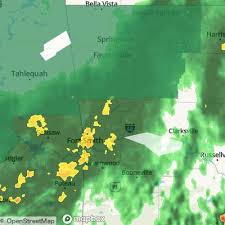Tracking Nature’s Fury with Precision
As storms brew and weather conditions shift, those in the know—including meteorologists and avid weather-watchers—turn their gazes to the skies armed with sophisticated technology: weather radar. This powerful tool has revolutionized the way we predict and respond to severe weather, offering invaluable insights into storm systems that could otherwise catch us off-guard.
The Mechanics Behind Weather Radar
Weather radar operates on the principle of sending out radio waves that bounce off precipitation particles, such as raindrops or snowflakes. The radar then detects these reflections and calculates both the intensity of the precipitation and its distance from the radar source. This data forms a moving picture of weather activity, essential for predicting severe weather phenomena.
According to a 2022 report by Environment and Climate Change Canada, nearly 75% of Canadians live in areas where extreme weather events are predicted to increase in frequency and intensity. With this in mind, understanding the intricacies of weather radar becomes crucial not only for meteorologists but also for the general public reliant on timely and accurate weather information.
Recent Innovations and Advancements
Innovations in weather radar technology have been gaining momentum in recent years. One notable advancement is the shift towards dual-polarization radar systems, which provide more detailed data on precipitation types and distribution. “Dual-polarization technology helps meteorologists differentiate between rain, snow, and even hail, giving us a clearer picture of what to expect,” explains Dr. Emily Tran, a senior meteorologist at the Canadian Meteorological Centre.
Furthermore, the integration of weather radar data with artificial intelligence is setting new standards in weather prediction. AI algorithms are increasingly being used to analyze radar data quickly and accurately, improving lead times for severe weather warnings. This is particularly critical during tornado outbreaks, where every minute counts.
The Public Reaction and Social Media Sentiment
In the wake of recent severe weather events, public interest in weather radar has surged. Social media platforms have seen a flurry of activity, with citizens sharing updates and images of storm developments, often referencing real-time radar data. Hashtags such as #WeatherRadar and #StormChasers have gained traction, showcasing a growing community of both amateur and professional meteorologists.
Many users express appreciation for the accuracy of radar forecasts, tweeting statements like, “Thankful for weather radar technology today! We were able to see storms coming and prepare safely. #WeatherRadar” This shift toward technology-assisted forecasting emphasizes how deeply intertwined weather awareness has become with daily life.
The Road Ahead for Weather Radar
As climate change continues to reshape weather patterns worldwide, the role of weather radar will only expand in importance. While the technology is already vital for public safety, ongoing enhancements make it more effective and accessible. Whether it is through improved accuracy, the integration of new technologies, or greater public understanding, weather radar stands as one of our most important tools in navigating the forces of nature.

